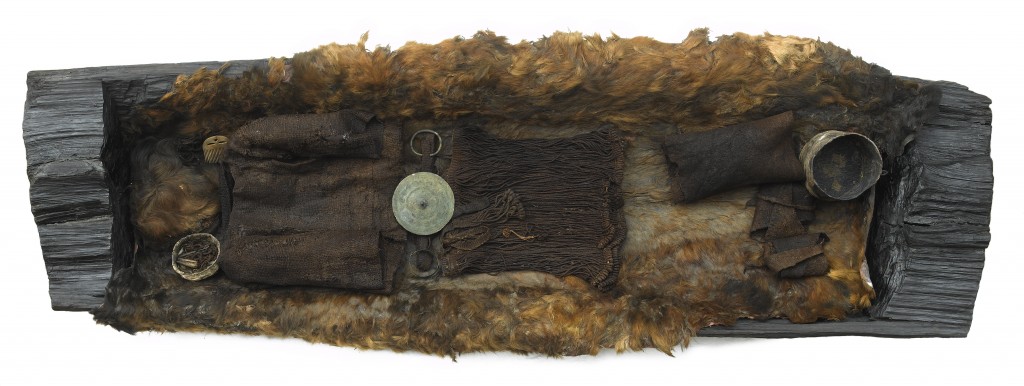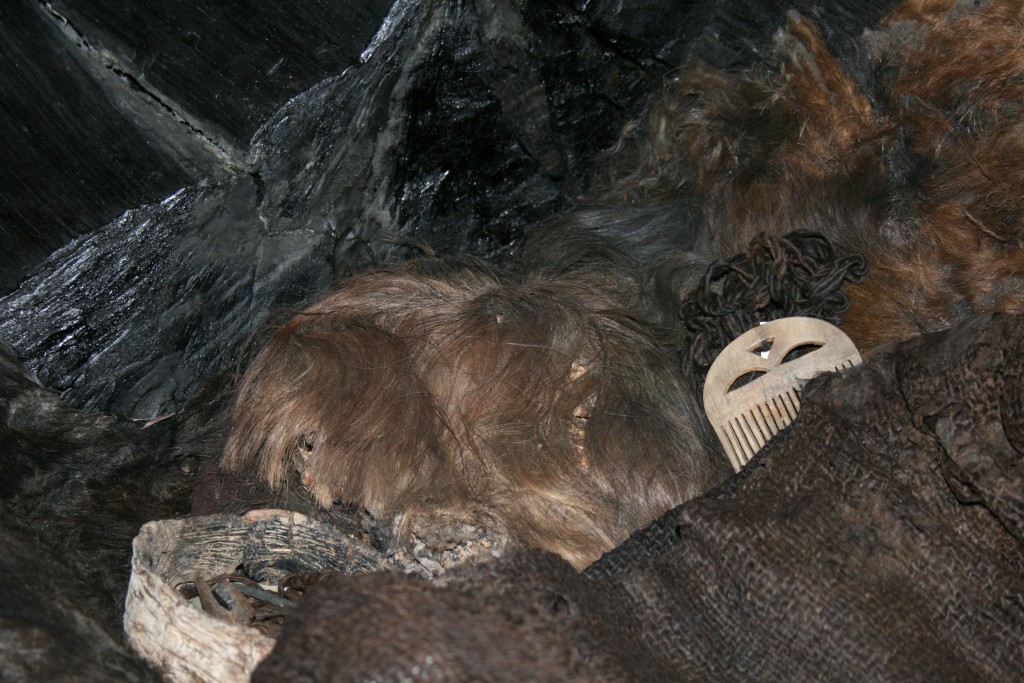The Egtved Girl, a 16–18 year old female, was discovered in the Danish village of Egtved in an oak coffin, calculated to have been buried around 3,400 years ago.
Her well-preserved hair, teeth, nails and clothes have enabled a team of researchers to trace the life story of this iconic female. It seems that the Egtved Girl originated from a place outside present-day Denmark and traveed back and forth over large distances during last two years of her life, according to a new paper in Scientific Reports this week, which offers insights into the movements of high-status European Bronze Age individuals.

A photo of the remains of a Bronze Age high status female found inside an oak-coffin in a monumental burial barrow at Egtved, Denmark. The Egtved Girl’s garments are extremely well preserved and her exceptional wool costume consists of several wool textile pieces as well as a disc-shaped bronze belt plate, symbolizing the sun. Photo: Roberto Fortuna, with kind permission of the National Museum of Denmark.
Ratios of different strontium isotopes in the tooth enamel do not match up with characteristic rages in Denmark, indicating to Karin M Frei and colleagues (DOI: 10.1038/srep10431) that she did not originate from Denmark. Isotopic analysis of the wool used to make her clothes indicates that it was gathered from outside present-day Denmark.
The authors suggest that the girl and her garments may have originated from the Black Forest in south-western Germany, although they cannot rule out other parts of Europe.
Her 23-cm long hair provides a record of her movements during at least the last 23 months of her life. Isotope signatures in the most recent hair segment (grown in the last 4-6 months of her life) and in her fingernails imply that she traveled from a place distant to Egtved shortly before to her death.

Close up image of the Bronze Age Egtved Girl’s scalp hair and brain remains as well as her well preserved costume. Credit: Karin Margarita Frei, National Museum of Denmark
Further analysis of her hair shows that she had a varied terrestrial diet with intervals of reduced protein intake.






Comments